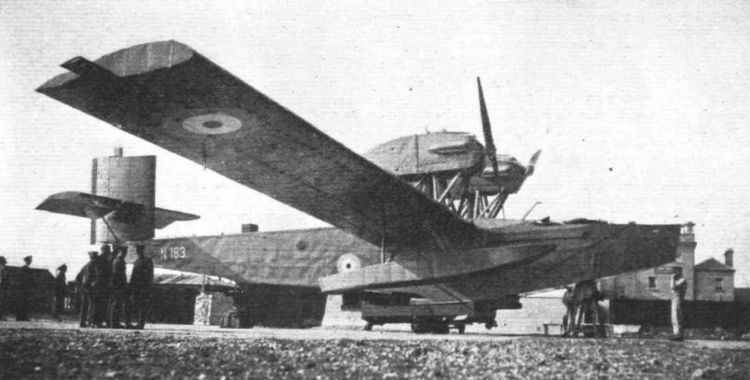Wingspan 29 m | ||
 | ||
Manufacturers William Beard and Company, Rohrbach Metall-Flugzeugbau | ||
The Rohrbach Ro IV, also known as the Beardmore BeRo.2 Inverness was an all-metal monoplane flying boat of the 1920s. Designed by the German company Rohrbach for the British Royal Air Force, two were ordered, one completed by Rohrbach's Danish subsidiary and the second by the British licensees, William Beardmore and Company, but the type performed poorly during testing and was abandoned.
Contents
Design and development
Dr.-Ing. Adolf Rohrbach, formerly of Zeppelin-Staaken, set up Rohrbach Metall-Flugzeugbau in 1922 to design and build large all-metal aircraft, with stressed skin structures, unusual for the time. In order to evade the restrictions of the Treaty of Versailles, Rohrbach set up a Danish subsidiary, Rohrbach Metal-Aeroplan Co A/S to assemble aircraft.
The Scottish shipbuilding company William Beardmore and Company of Dalmuir agreed a license manufacturing deal with Rohrbach in 1924. The British Air Ministry was interested in the use of metal hulls for flying boats, and therefore drew up Specification 20/24 for an all-metal monoplane flying boat to compare with the wooden biplanes in service with the Royal Air Force. In November 1924 Beardmore received an order for two Rorhbach flying boats, based on Rohrbach's Ro III but powered by British Napier Lion engines.
The Ro IV, known as the BeRo.2 Inverness by Beardmore, was a twin-engined high-winged cantilever monoplane, constructed mainly of duralumin. Its two engines were mounted in streamlined tractor nacelles above the wing centre section, while the slab-sided fuselage accommodated the crew of four. The design included a retractable mast and sails in case of engine failure or running out of fuel
In order to speed delivery, the first aircraft serial number N183 was assembled in Rohrbach's Copenhagen factory from parts made in Rohrbach's main works in Berlin. It was delivered to the Marine Aircraft Experimental Establishment at Felixstowe on 18 September 1925, but testing showed the aircraft had poor handling both in the air and on the water, and poor performance, and it was destroyed during strength testing during May 1927.
The second prototype, assembled by Beardmore from Berlin-built parts, did not fly until 30 November 1928. While it incorporated a revised fuel and cooling system and a modified rudder, N184 still demonstrated poor performance, and the programme was stopped in April 1929, and the prototype scrapped.
Specifications (N.184)
Data from British Flying Boats
General characteristics
Performance
